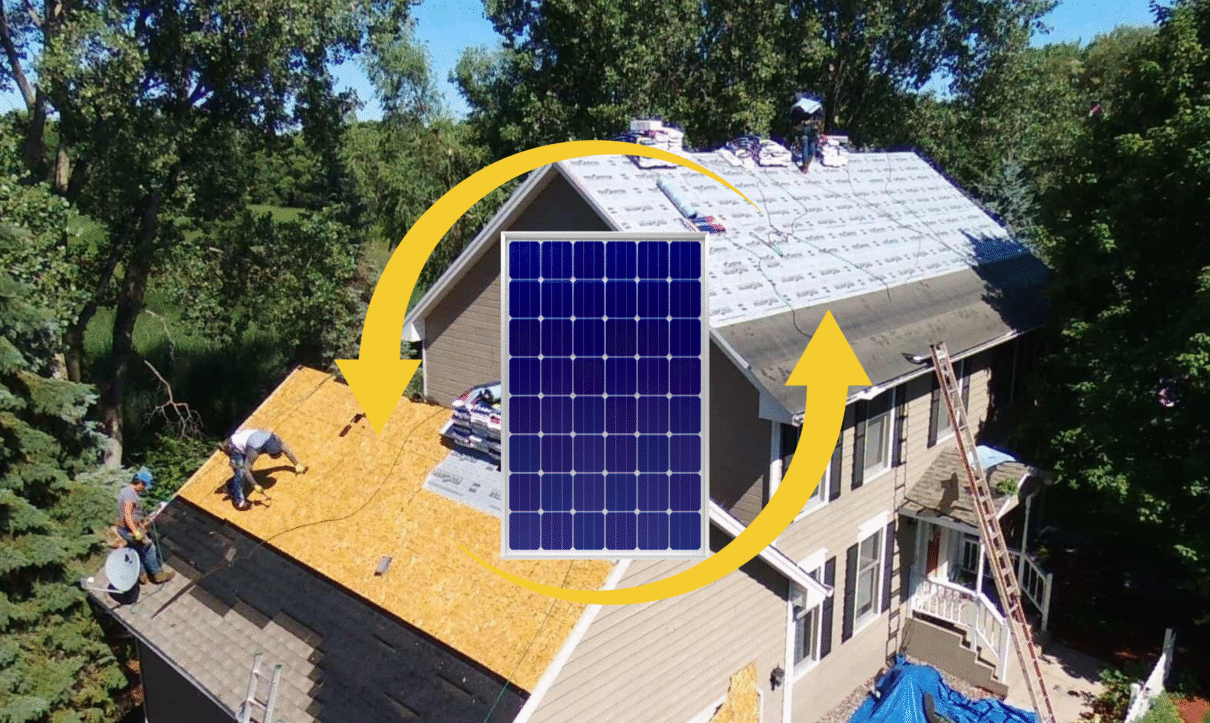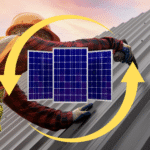Why Roof Type Matters in Solar Panel Removal and Reinstall
Not All Roofs Are the Same
When it comes to removing and reinstalling solar panels, the roof type matters as much as the panels themselves. That’s because each roof requires a different mounting system — and the way panels are attached determines how complex (and costly) the removal and reinstall will be.
For more on how solar systems connect to your home, visit the U.S. Department of Energy’s Solar Basics.
Shingle Roofs
Shingle roofs are the most common in residential solar, and they’re usually the easiest to remove and reinstall. The mounting system almost always uses rails anchored into the rafters with flashing to prevent leaks.
- Pros: Affordable, straightforward, and reliable.
- Key Point: As long as the system is rail-based and properly sealed, shingles make removal and reinstall smooth.
- Watch Out: If the roof is old or brittle, shingles may tear during removal, which means additional patching or replacements.
Tile Roofs
Tile roofs are beautiful but more complicated. Because tiles are fragile, installers often remove individual tiles to access the rafters below and then build a standoff or elevated racking system to hold the panels.
- Pros: Provides strong support, raises panels above uneven tiles, and prevents water issues.
- Cons: More expensive hardware, longer labor time, and higher risk of tile breakage during removal or reinstall.
- Watch Out: Homeowners should always keep spare tiles on hand, since exact matches can be hard to find if any break.
Metal Roofs
Metal roofs can be excellent for solar, but the mounting system depends on the type of metal.
- Standing Seam Roofs: Panels attach with seam clamps, which means no roof penetrations. This makes removal and reinstall faster and often safer for the roof.
- Screw-Down Metal Roofs: These require drill-in attachments, with flashing and sealants to keep the roof watertight. Removal and reinstall takes more care and time compared to standing seam.
- Pros: Durable roof material that typically outlasts the solar system.
- Cons: Screw-down systems can lead to more potential leak points if not reinstalled correctly.
Flat Roofs
Flat roofs (common in commercial and some residential) often use ballasted systems where panels sit on weighted racks instead of being drilled into the roof.
- Pros: No penetrations in many cases, easier to adjust panel layout.
- Cons: Panels must be removed carefully to avoid damaging the roof membrane, and reinstallation often requires engineering review for load calculations.
- Watch Out: Some flat roofs still use penetration mounts for added security, so removal depends on the original design.
Warranties: Protecting Your Investment
When solar panels are removed and reinstalled, warranties are always on the line. Homeowners often don’t realize that doing this work with an unlicensed or inexperienced contractor can:
- Void the solar panel manufacturer’s warranty if the panels are damaged or incorrectly reinstalled.
- Affect the roof warranty, especially if penetrations are not properly sealed.
- Create issues with the inverter or monitoring warranty, if the system isn’t reconnected correctly.
Professional removal and reinstall is the only way to keep warranties intact. Certified installers know the manufacturer’s guidelines, use approved hardware, and document the process for warranty continuity.
Costs: Why They Vary
The cost of removal and reinstall is not one-size-fits-all. Several factors affect the price:
- Roof Type & Mounting System – Shingle roofs with rail systems are the cheapest and fastest. Tile roofs with elevated racks are more expensive. Metal roofs vary: standing seam is cost-efficient, while screw-down adds more time and sealing work. Flat roofs may require engineering review.
- Number of Panels – A larger system takes more labor and time.
- Condition of the Roof – Brittle shingles or broken tiles mean extra repair or replacement costs.
- Permits and Engineering Plans – Some counties allow reuse of original plans, others require new ones.
- Hardware Replacement – Old or corroded flashing, rails, or clamps often need replacement.
Bottom line: Removal and reinstall is an investment in protecting both your solar system and your roof. The upfront cost is far less than the potential expense of leaks, lost warranties, or damaged panels if the job is done incorrectly.
Conclusion: Protect Your Roof and Your Solar Investment
Removing and reinstalling solar panels isn’t just about taking panels down and putting them back up — it’s about protecting your home, your warranties, and your investment in clean energy.
The type of roof and mounting system play a major role in how complex the job will be. Each one has its own challenges — and cutting corners can cost you more in the long run.
By choosing licensed professionals, you:
- Keep your solar and roof warranties intact
- Avoid costly mistakes like leaks, cracked tiles, or damaged wiring
- Ensure your system is safely reinstalled and fully tested
- Save money by getting the job done right the first time
If you’re planning a roof replacement, remodel, or move, don’t risk your solar system with guesswork. Trust experienced installers who understand every roof type and every mounting system.
👉 Ready to protect your solar investment?
Get your free removal & reinstall estimate here.



